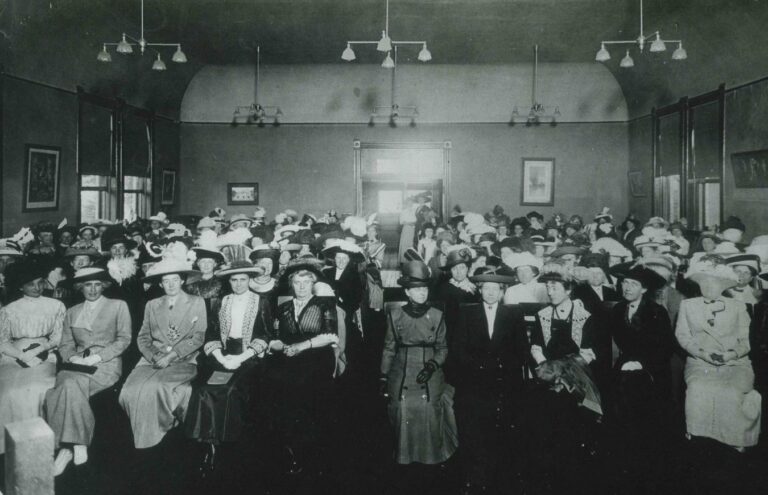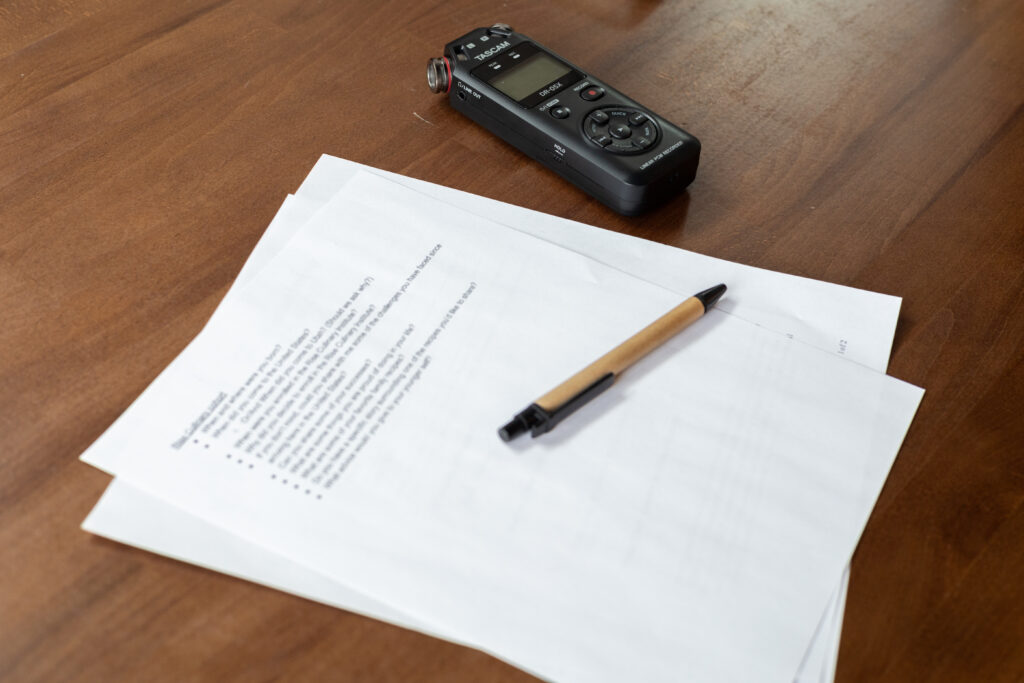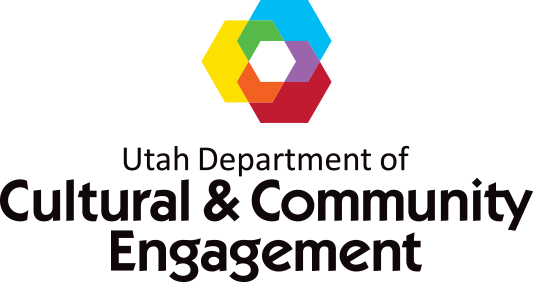By Camille Critchfield, Utah Historical Society Oral History and Women’s History Ambassador
Utah’s literary history is rich with the voices of women who have shaped both culture and community through their creativity and advocacy. From the late 19th century to today, women’s literary clubs and publications have provided platforms for intellectual engagement, social reform, and artistic expression.
Foundations of Literary Culture

Utah’s literary culture flourished in the late 1800s, thanks in large part to pioneering organizations such as the Salt Lake Ladies’ Literary Club, established in 1877—one of the oldest women’s clubs west of the Mississippi. This club was an outgrowth of the earlier Blue Tea Club, founded by Jennie Froiseth in 1875, and was dedicated to “literary pursuits and mental culture,” while also supporting civic projects such as the establishment of Utah’s first free public library.
Publications such as The Woman’s Exponent and Young Woman’s Journal gave women a voice in public discourse, allowing them to engage intellectually and creatively at a time when their educational and professional opportunities were limited. These platforms played a vital role in advocating for women’s rights, education, and community improvement.
Exploring Utah’s Women’s Literary Scene Through Oral History

During my year-long ambassadorship with the Utah Historical Society, I worked to document Utah women’s contemporary literary history through oral history–a methodical and meaningful process. I began with thorough preliminary research into the state’s literary landscape and existing oral history collections, identifying gaps in representation—particularly among women writers. Then, I carefully selected narrators to include a range of voices, reflecting Utah’s rich literary community.
Interview preparation involved crafting open-ended questions that invited reflection on career transitions, motherhood, publishing challenges, and the unique aspects of Utah’s literary culture. During the oral history interview, the goal was to create a comfortable environment where narrators felt heard, encouraging candid and thoughtful conversation.
Afterward, interviewees signed legal agreements regarding the use of their recorded interview. Then, the oral history interview was transcribed with care to preserve each narrator’s voice and style. Finally, these stories are shared through the Peoples of Utah Revisited online collection, making them accessible to the public and ensuring that the experiences of Utah’s women writers are recognized and valued for generations to come.
Thriving Literary Communities
Utah’s long history of supporting the arts has paved the way for a vibrant literary community in the 21st century. Events such as the Storymakers Conference and Quills Conference celebrate creativity and provide mentorship opportunities for aspiring writers. These spaces continue Utah’s legacy of fostering literary talent and community engagement.
Contemporary Voices
Erin Stewart loves using her background in journalism to research and write fiction based on real life. She emphasizes the importance of emotional connection in her writing:
“I want to read something that makes me feel something, good or bad, or in between. I want to feel something. So the books I write, I want to feel a human connection through emotion, and that’s why I like writing that.”
Tricia Levenseller, known for her romantic fantasy novels featuring strong female protagonists, reflects on gender and representation when she says:
“I’ve always noticed the discrepancies between the ways we treat men and women … So what comes out in my writing is not just three-dimensional characters, but characters who don’t have these stereotypical male and female [roles] but also love to wear dresses.”
Sharing the Project
In May, I had the opportunity to present a poster on my oral history project at the Storymakers Conference, one of the largest gatherings for writers in the Intermountain West. Presenting at Storymakers was especially significant because it brought this important historical research directly to a vibrant, engaged community of contemporary writers, many of whom are shaping Utah’s literary future. By sharing the stories and legacy of Utah’s pioneering women authors and the ongoing oral history project, I connected the past with the present, inspiring current and aspiring writers to recognize and celebrate their place in this unfolding story.

Conclusion
Utah’s women’s literary history is not just a record of the past—it is a living tradition shaped by creativity, resilience, and a commitment to community. The voices of women writers continue to inspire, challenge, and guide new generations. By sharing these stories, we not only preserve a vital part of our state’s heritage but also invite every member of our community to contribute their own chapter. Together, we are writing the next page in Utah’s literary legacy, ensuring that the voices of women remain at the heart of our collective story.
Footnotes:
- Toni Pilcher, “The Ladies’ Literary Club,” Utah Women’s History, Better Days, May 18, 2022, https://utahwomenshistory.org/2022/05/the-ladies-literary-club/.
- “Women’s Oral History Database,” Utah State Historical Society, accessed June 1, 2025, https://history.utah.gov/wp-content/uploads/2024/05/Womens-Oral-History-Database-Sheet1.pdf.
- Allesen Peck, “Historical Note,” Ladies’ Literary Club of Salt Lake City records, Archives West, 1984, https://archiveswest.orbiscascade.org/ark:80444/xv12194.
- Helen Z. Papanikolas, “Utah’s Ethnic Women,” in Women in Utah History: Paradigm or Paradox?, ed. Patricia Lyn Scott and Linda Thatcher (Logan: Utah State University Press, 2005), 207–229.
- Patricia Lyn Scott and Linda Thatcher, eds., Women in Utah History: Paradigm or Paradox? (Logan: Utah State University Press, 2005).
- “Oral History Program,” Utah Historical Society, accessed June 1, 2025, https://history.utah.gov/oral-history-program/.
- “Utah Women Who Made History,” Good News Utah, September 3, 2024, https://goodnewsutah.com/utah-women-who-made-history/.
Please note: The views and opinions expressed in partner content may not reflect the views of the Utah Historical Society.
